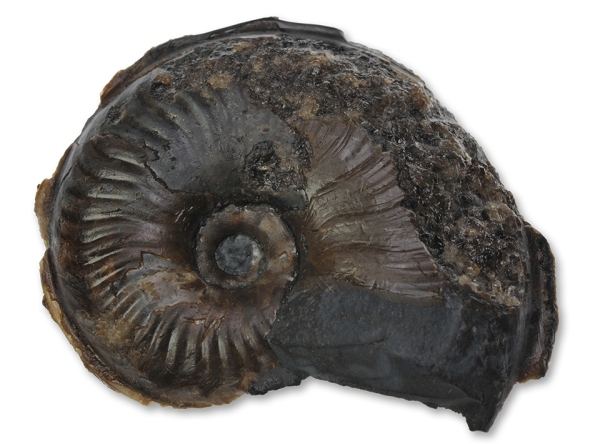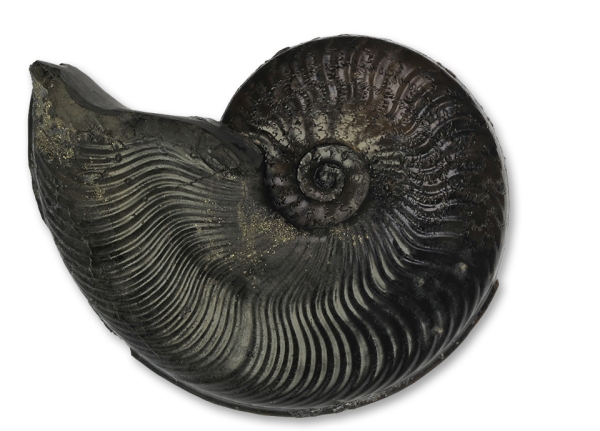It´s more than 20 years ago that I found the above ammonite, and it has remained the only 3D preserved Yorkshire specimen of this species so far in my collection.
It was found, probably in a semicelatum subzone nodule, at Runswick Bay. “Probably”, because nothing much remained of the original nodule…
At that time, we used to sit down on the terrace of our then accommodation in nice weather and reduce weight on the fossils as much as we could, we were coming by plane to London and took trains and buses to Yorkshire, so luggage weight was restricted, both by the airline and the amount of rock we could carry…
The ammonite must have been damaged by splitting the nodule already and I obviously tried to extract the better preserved side by separating it from it´s heavy nodule matrix using only small chisels and hammer – this is why this ammonite ended being like it is today – a rather damaged specimen.
I must have also taken it for an Eleganticeras, because some years later when I was re-organizing my drawers I looked at my Eleganticeras specimen again
and found there was one that somehow did look different from a same sized Eleganticeras.
The umbilicus is the shell element that clearly distinguishes Eleganticeras and Tiltoniceras :
While Eleganticeras has an angled umbilical edge, Tiltoniceras has a smoothly rounded umbilical edge.
There are some beds on the Yorkshire coast where crushed, flattened Tiltoniceras are quite abundant, but I find it quite difficult to distinguish flattened Tiltoniceras from flattened Eleganticeras :
It is only quite clear when you find them with Dactylioceras semicelatum in the same bed, like in a photograph I´ve shown in an earlier post :
Of course with hindsight, the ammonite would have deserved a much better preparation.
Today I´d probably recognize it for what it is and with much better tools and a lot more experience attempt a transfer preparation of the broken off pieces,
and display it on the half nodule, keeping it in it´s natural matrix. But – it is what it is, a product of what I knew and could do then.
AndyS





